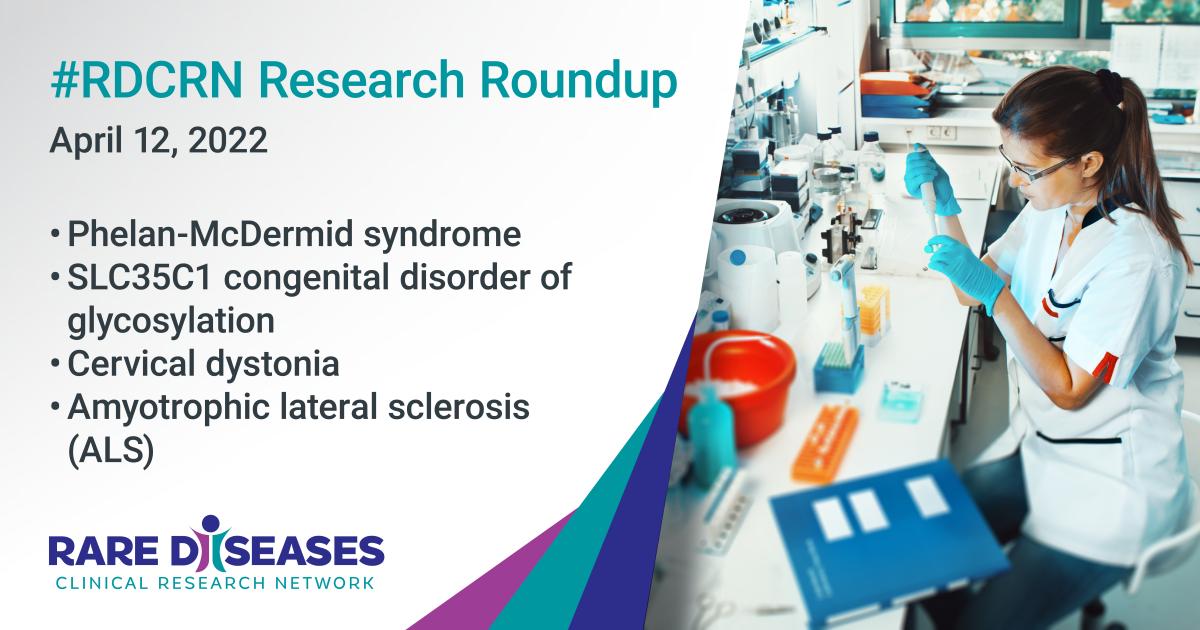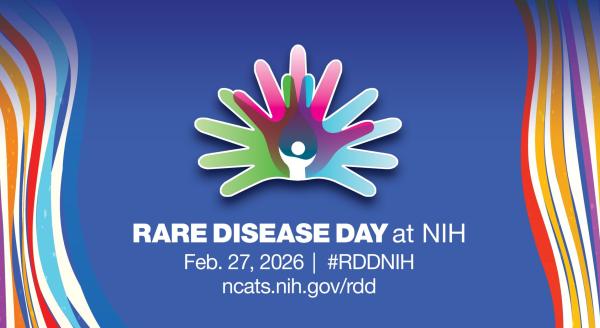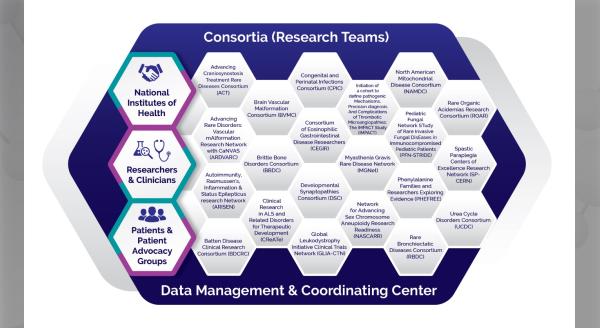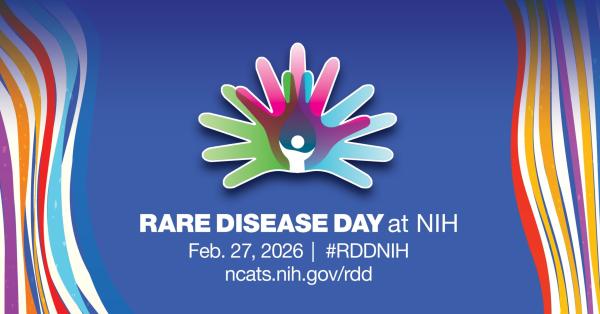Each week, we share summaries of recent Rare Diseases Clinical Research Network (RDCRN) grant-funded publications. Read new research on Phelan-McDermid syndrome, SLC35C1 congenital disorder of glycosylation, cervical dystonia, and amyotrophic lateral sclerosis (ALS).
Characterizing Repetitive Behaviors in Phelan-McDermid Syndrome
Developmental Synaptopathies Consortium: Parent-reported measure of repetitive behavior in Phelan-McDermid syndrome
Repetitive behaviors are often seen in individuals with autism spectrum disorder as well as intellectual disability. Due to the association of these diagnoses with Phelan-McDermid syndrome (PMS), researchers characterized the severity and profile of repetitive behaviors in PMS relative to previously published scores in other neurodevelopmental disorders.
The team used the Repetitive Behavior Scale-Revised (RBS-R) as a parent-report measure of what was collected as part of a natural history study of PMS through the Developmental Synaptopathies Consortium (DSC). Researchers demonstrated that individuals with PMS in this cohort had lower rates of repetitive behaviors compared to previous studies of individuals with autism spectrum disorder and Fragile X syndrome. They also showed that more severe motor repetitive behaviors (e.g., body rocking, finger movements) were associated with lower IQ scores in PMS, but this relationship was not present between IQ and other types of repetitive behaviors.
These findings indicate that repetitive behaviors may be milder overall in PMS compared to previous studies characterizing autism spectrum disorder and other genetic conditions. Stereotyped motor behaviors may be related to level of cognitive functioning, and not an autism spectrum disorder diagnosis, in PMS. Authors note the need to better understand these findings by continuing to study repetitive behaviors in PMS using objective measures.
Researchers Describe New Patients with SLC35C1 Congenital Disorder of Glycosylation
Frontiers in Congenital Disorders of Glycosylation (FCDGC): Defining the mild variant of leukocyte adhesion deficiency type II (SLC35C1-congenital disorder of glycosylation) and response to l-fucose therapy: Insights from two new families and review of the literature
Leukocyte adhesion deficiency type II (LAD II, also known as SLC35C1-congenital disorder of glycosylation) is an autosomal recessive disorder characterized by growth and cognitive impairment, peripheral neutrophilia, recurrent infections, and the Bombay blood phenotype.
Among a subset of patients with a milder presentation, descriptions have also included short stature and developmental delay with minimal immune and hematologic (relating to blood) features. While some patients with LAD II benefit from oral fucose therapy, this has not yet been studied in patients with milder disease.
In this study, researchers describe three new patients from two separate families with the milder variant of LAD II and review the published literature. After 27 months of oral fucose supplementation, one patient showed improvements in speech and cognition, CD15 expression, and core fucosylation of serum glycoproteins.
Authors note that these patients support classification of this disorder into distinct subtypes—a classical severe and an attenuated variant—and provide preliminary evidence of benefit of fucose therapy in the latter group.
Video Captures Head Posture in Cervical Dystonia
Dystonia Coalition (DC): Hold that pose: capturing cervical dystonia's head deviation severity from video
Cervical dystonia (CD) is a movement disorder resulting in characteristic, sustained, or tremor-like involuntary muscle contractions of the neck. It is characterized by excessive pulling of the muscles of the neck and shoulder, which causes the head to turn or tilt involuntarily.
Typically, head posture severity is quantified with clinical rating scales that are susceptible to variability, reducing their sensitivity as outcome measures. Previously used objective methods require specialized equipment and have been limited to studies with a small number of cases.
In this study, researchers evaluated a novel software system—the Computational Motor Objective Rater (CMOR)—to quantify multi-axis directionality and severity of head posture in CD using only conventional video camera recordings. They found that CMOR’s metrics for head posture severity correlated with clinical rating scales. Authors note that CMOR’s reliance upon only conventional video recordings supports its future potential for large-scale multisite clinical trials.
ALS Toolkit Harnesses Power of the Electronic Health Record
Clinical Research in ALS and Related Disorders for Therapeutic Development (CReATe): Harnessing the power of the electronic health record for ALS research and quality improvement: CReATe CAPTURE-ALS and the ALS Toolkit
Effective use of electronic health record (EHR) data for research purposes has been a long-standing goal of physicians caring for patients with amyotrophic lateral sclerosis (ALS). Several barriers, however, have impeded progress toward this goal, including the limited quality and completeness of clinical documentation, as well as the burden of duplicative entry of clinical data into a research database.
To address these barriers, researchers developed the ALS Toolkit, a set of interactive digital forms integrated into the EHR. Used routinely during clinic visits, the ALS Toolkit enables seamless, structured and consistent collection of data elements relevant to ALS patient care, with the expectation that these will also be suitable for research purposes. Since it incorporates AAN quality measures for the care of ALS patients, the ALS Toolkit may also be used to facilitate quality improvement initiatives.
CReATe’s Clinical Procedures to Support Research in ALS (CAPTURE-ALS) study utilizes the ALS Toolkit to facilitate multi-center aggregation of data collected at the point of clinical care, empowering research and driving quality improvement. With the goal of collecting data from all patients receiving care through multidisciplinary clinics, CAPTURE-ALS will yield data that reflects the true diversity of populations affected by ALS, rather than the restricted subset of patients currently participating in dedicated research studies.
The Rare Diseases Clinical Research Network (RDCRN) is funded by the National Institutes of Health (NIH) and led by the National Center for Advancing Translational Sciences (NCATS) through its Division of Rare Diseases Research Innovation (DRDRI). Now in its fourth five-year funding cycle, RDCRN is a partnership with funding and programmatic support provided by Institutes, Centers, and Offices across NIH, including the National Institute of Neurological Disorders and Stroke, the National Institute of Allergy and Infectious Diseases, the National Institute of Diabetes and Digestive and Kidney Diseases, the Eunice Kennedy Shriver National Institute of Child Health and Human Development, the National Institute of Arthritis and Musculoskeletal and Skin Diseases, the National Heart, Lung, and Blood Institute, the National Institute of Dental and Craniofacial Research, the National Institute of Mental Health, and the Office of Dietary Supplements.






